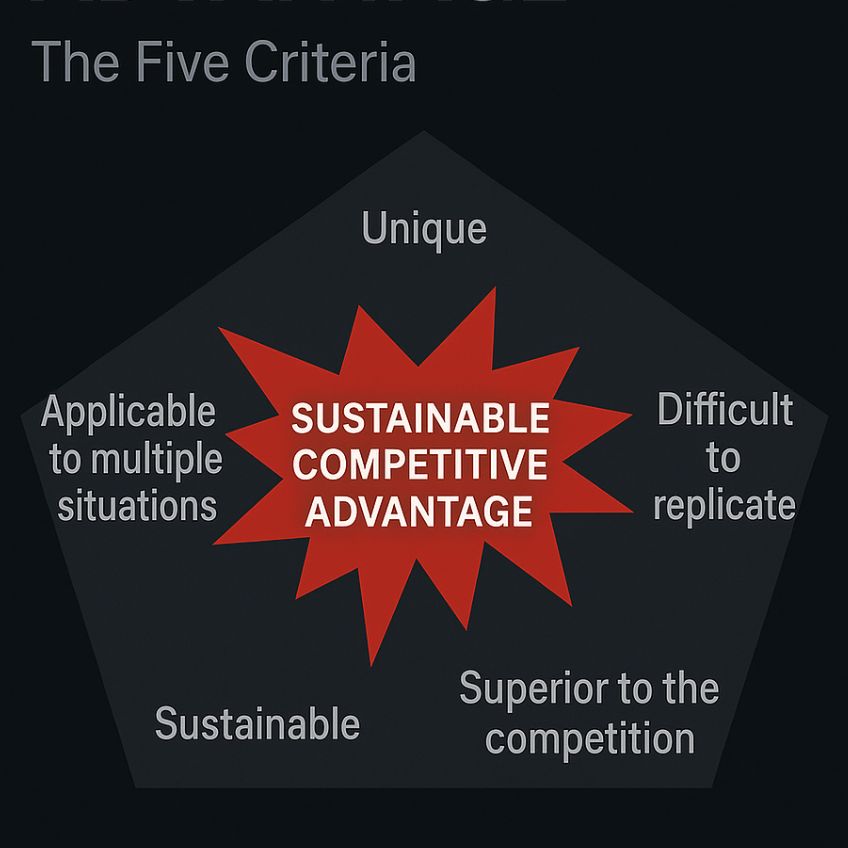How to focus, build and sustain - Competitive Advantage

Below are 5 main criterias to focus for having a Sustainable Competitive Advantage:

Sustainable competitive advantage is the prolonged benefit
of implementing some unique value-creating strategy based on unique combination
of a) internal organizational resources and b) capabilities that cannot be replicated
by competitors.
Competitive
Strategies
Case study 1 - Warren
Buffet's Investment Criteria - Warren Buffet was once asked what is the most
important thing he looks for when evaluating a company to invest in. Without
hesitation, he replied, "Sustainable competitive advantage."
Case study 2 - Amazon.com - New business model developed by
Amazon.com creates value for customers by offering a synergistic combination of
the following benefits:
> Shopping convenience
> Ease of purchase
> Speed
> Decision-enabling information
> A wide selection
> Discounted pricing
> Reliability of order fulfillment
No single aspect of Amazon.com's business model is
sufficient to create a sustainable competitive advantage. It is the synergistic
combination of all of these information services and logistical processes that
creates value for customers and comprise Amazon.com's competitive advantage.
Case study 3 - Toyota - Toyota’s global competitive
advantage is based on a corporate philosophy known as the Toyota Production
System. The system depends in part on a human resources management policy that
stimulates employee creativity and loyalty but also on a highly efficient
network of suppliers and components manufacturers.
Workforce advantage of Toyota - Create a workforce that
would provide a competitive advantage
"An intelligent and integrated human resources strategy
is the only sustainable competitive advantage... Every other corporate asset
can be bought or replicated virtually overnight, but competitors seeking to
duplicate a well-trained, motivated, and committed workforce will need at least
a decade to catch up. Exceptional cultures just can't be created
with the wave of wand – or a major infusion of capital," says Mark
Stevens, the author of Extreme Management.
How to finalize its execution process:-
Build on Your Core Competencies - The core competencies are the things your company can do better than your competitors. If a core competency yields a long term advantage to the company, it is said to be a sustainable competitive advantage. As a leader, you must focus your firms resources on what it does best and what creates competitive advantage. Some technical and business competencies can be in short supply however. You can address these missing competencies by using three approaches: internal development, acquisition of an outside firm, and partnering.
Focus on Your Competitive Advantage - Focus on your core competencies and outsource the rest. Make sure that you don't outsource your competitive advantage. You will never lead in innovation or be faster to market than your competition if you depend on other for your core technology. Owning your competitive advantage will allow you to build it continuously, be more flexible, and eliminate speed breakers.
Barriers to Entry - Barriers to entry are circumstances particular to a given industry that create disadvantages for new competitors attempting to enter your market.
The Role of Intellectual Property Rights and Strategy - In most industries, intellectual property rights (IPR), especially patents and their exploitation, hold key significance in the development and commercialization of new products. Businesses should have an intellectual property strategy as part of their corporate planning and strategy.